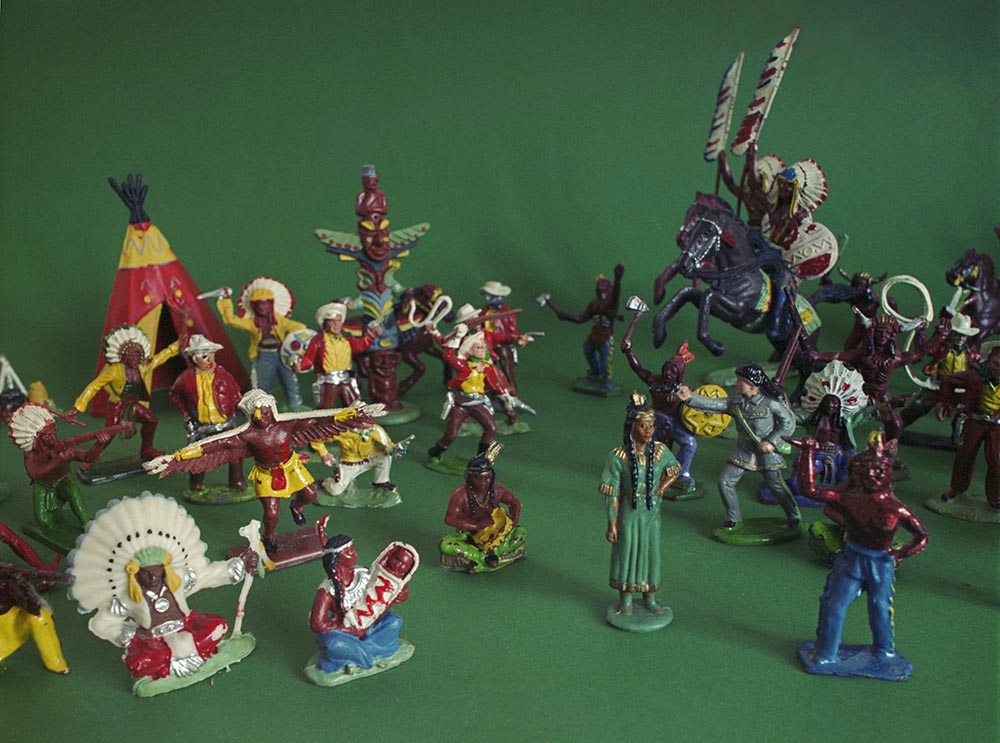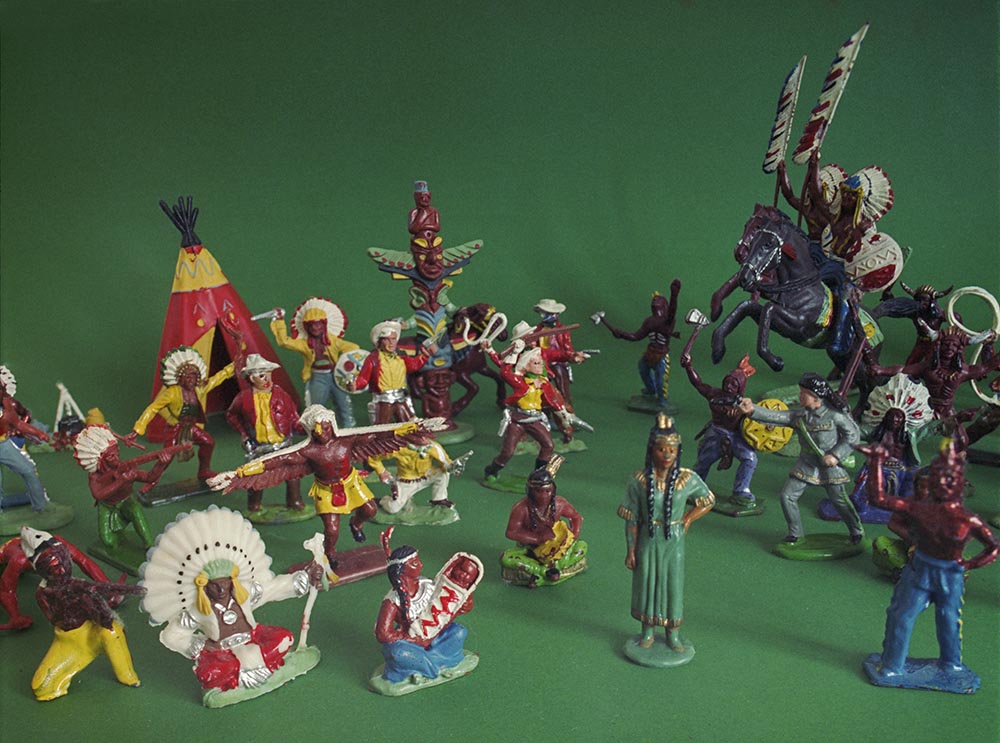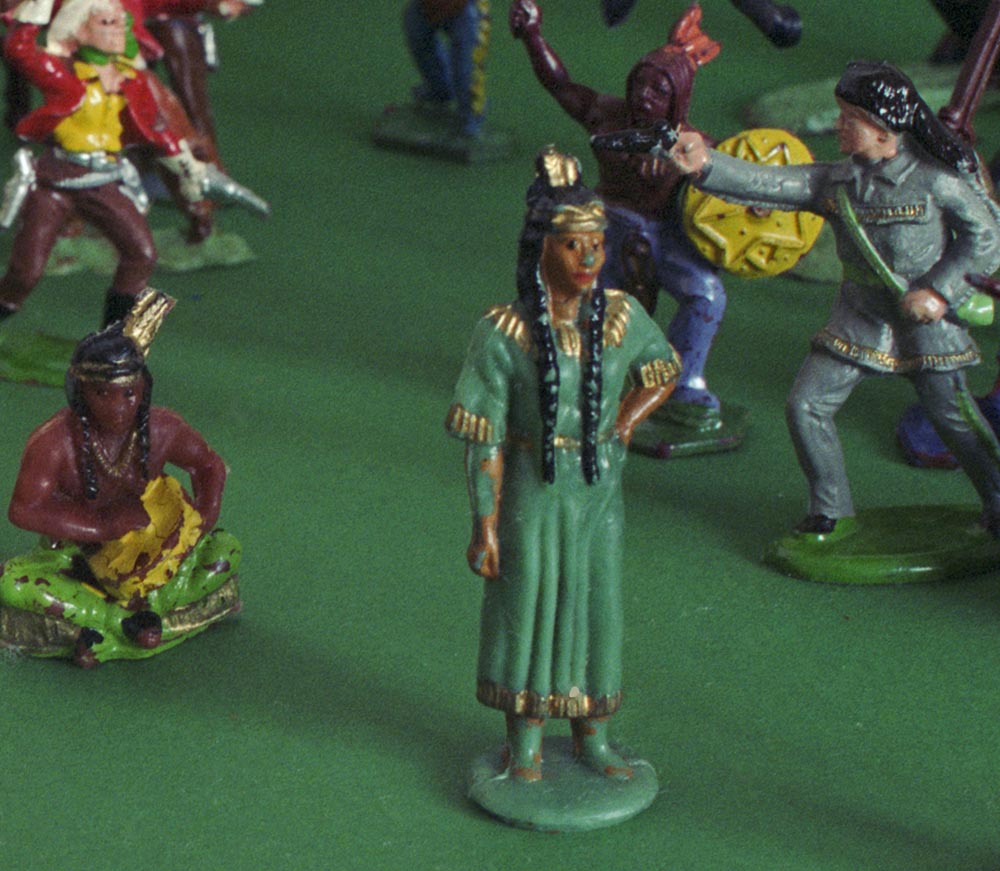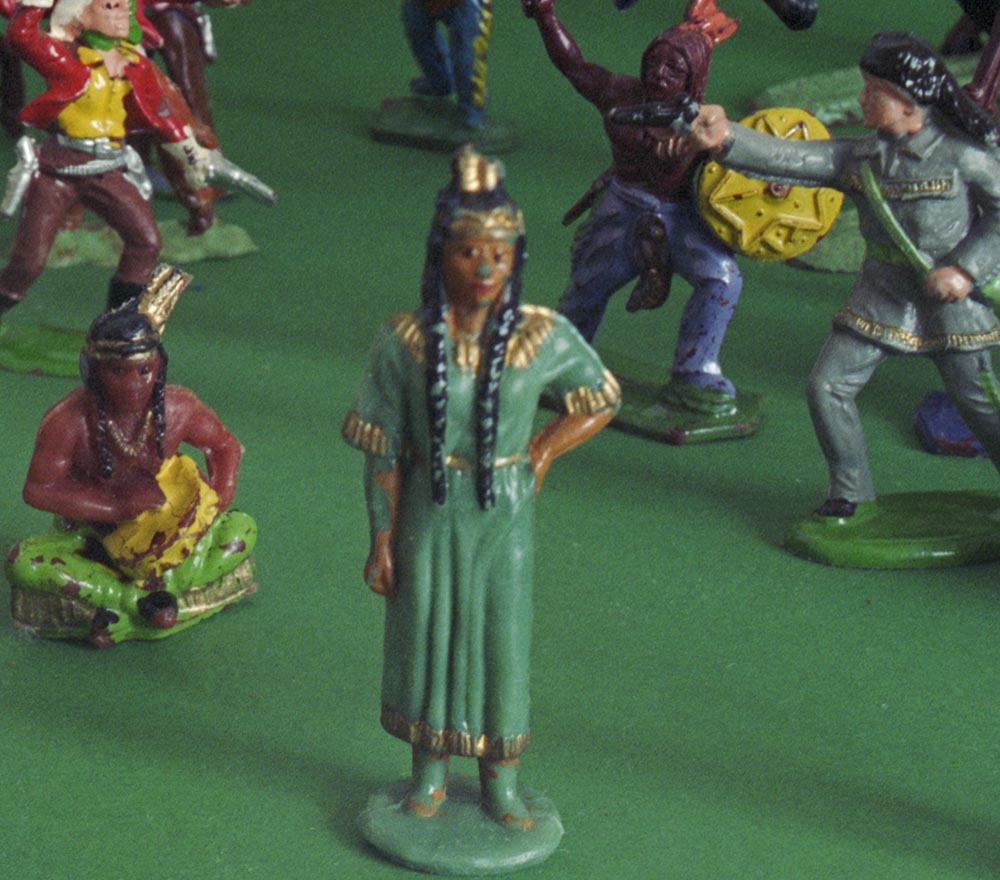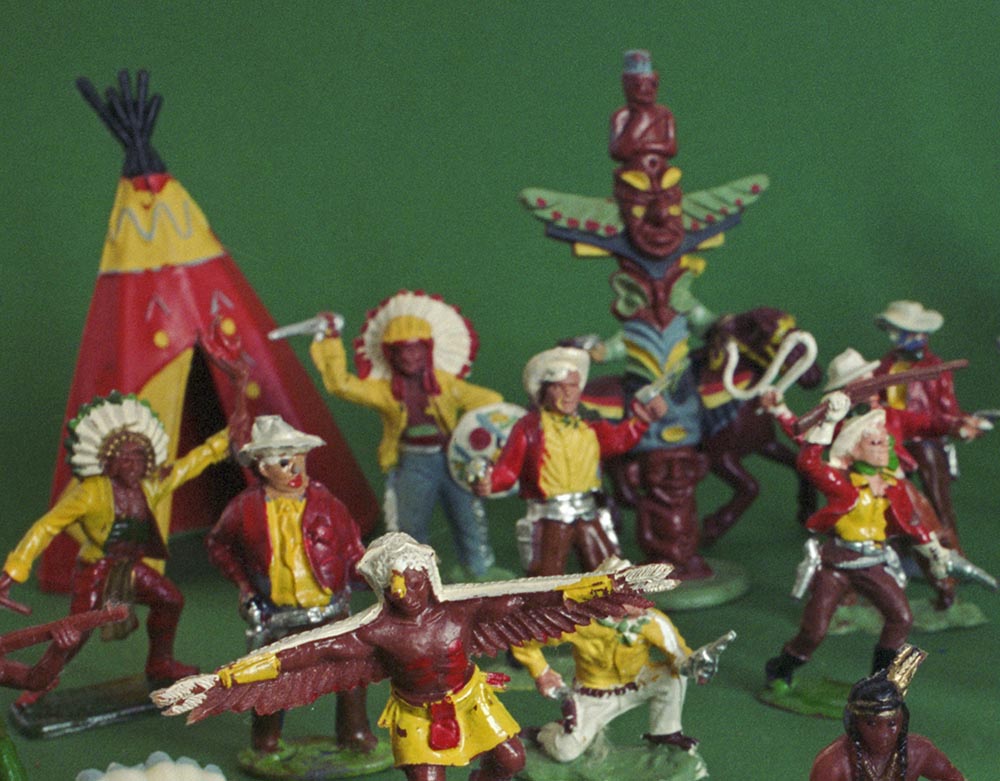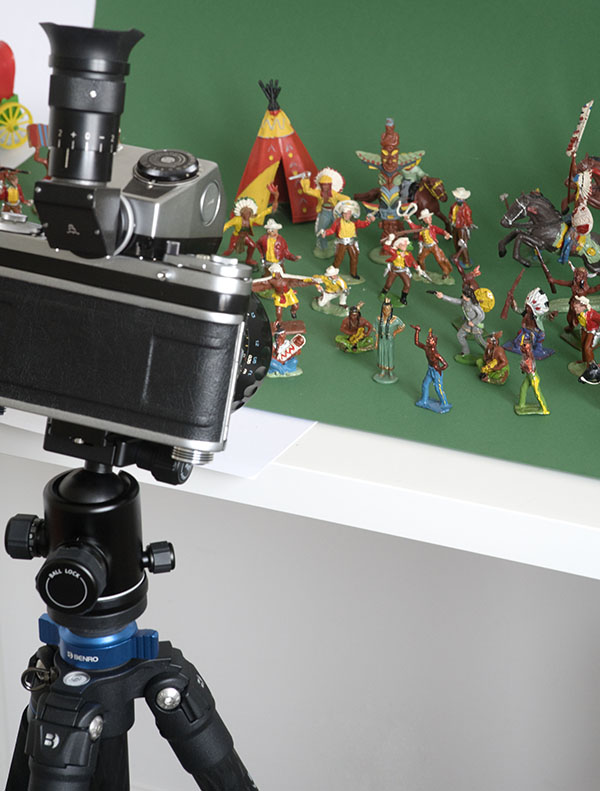- the aperture: the larger the aperture (the smaller the aperture number), the shallower the depth of field;
- the focussing distance: the closer a lens is focussed, the shallower the depth of field;
- the focal length: the longer the focal length, the shallower the depth of field.
The 45mm Hartblei Super-Rotator Tilt/Shift
lens has a very short focal length (for Medium Format),
and therefore an inherently extended depth of field, so
I decided to exploit the other two factors that give a
shallow depth of field by taking some close-up pictures
and using wide apertures, to see if using the tilt
facility of this lens would increase the in-focus range
for me.
Test 1: coins and
notes
Here is the set-up for the first test.
Photographs shot on Fuji NPS 160, which
also enabled me to use wider apertures than might have
been possible with faster film. Illumination was
provided by natural daylight from a north-facing window
on a bright day.
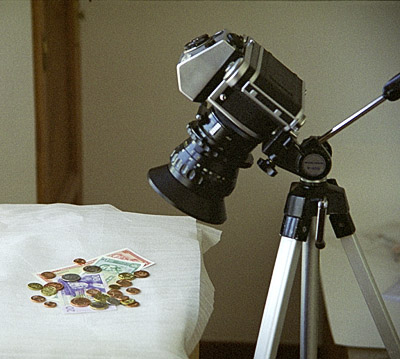
[C471-25A.jpg]





